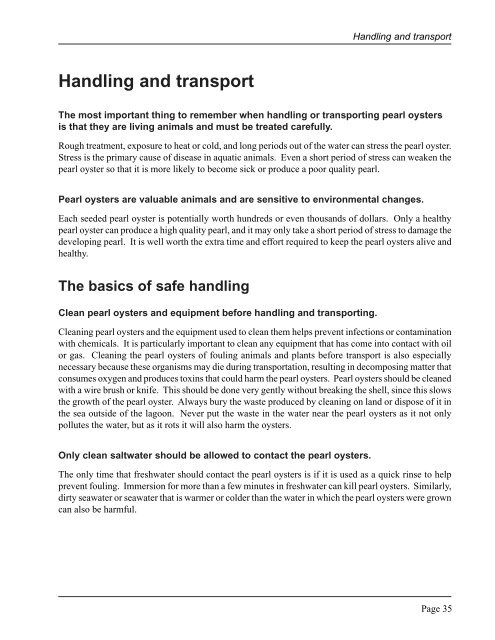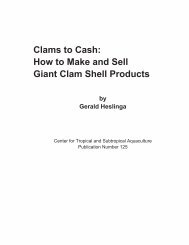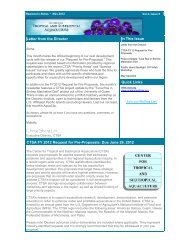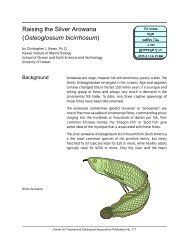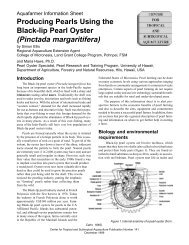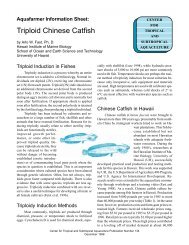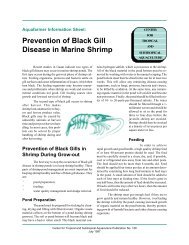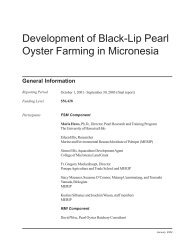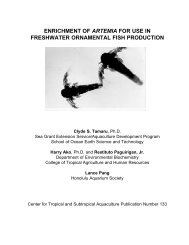The Basic Methods of Pearl Farming: A Layman's Manual - CTSA
The Basic Methods of Pearl Farming: A Layman's Manual - CTSA
The Basic Methods of Pearl Farming: A Layman's Manual - CTSA
Create successful ePaper yourself
Turn your PDF publications into a flip-book with our unique Google optimized e-Paper software.
Handling and transportHandling and transport<strong>The</strong> most important thing to remember when handling or transporting pearl oystersis that they are living animals and must be treated carefully.Rough treatment, exposure to heat or cold, and long periods out <strong>of</strong> the water can stress the pearl oyster.Stress is the primary cause <strong>of</strong> disease in aquatic animals. Even a short period <strong>of</strong> stress can weaken thepearl oyster so that it is more likely to become sick or produce a poor quality pearl.<strong>Pearl</strong> oysters are valuable animals and are sensitive to environmental changes.Each seeded pearl oyster is potentially worth hundreds or even thousands <strong>of</strong> dollars. Only a healthypearl oyster can produce a high quality pearl, and it may only take a short period <strong>of</strong> stress to damage thedeveloping pearl. It is well worth the extra time and effort required to keep the pearl oysters alive andhealthy.<strong>The</strong> basics <strong>of</strong> safe handlingClean pearl oysters and equipment before handling and transporting.Cleaning pearl oysters and the equipment used to clean them helps prevent infections or contaminationwith chemicals. It is particularly important to clean any equipment that has come into contact with oilor gas. Cleaning the pearl oysters <strong>of</strong> fouling animals and plants before transport is also especiallynecessary because these organisms may die during transportation, resulting in decomposing matter thatconsumes oxygen and produces toxins that could harm the pearl oysters. <strong>Pearl</strong> oysters should be cleanedwith a wire brush or knife. This should be done very gently without breaking the shell, since this slowsthe growth <strong>of</strong> the pearl oyster. Always bury the waste produced by cleaning on land or dispose <strong>of</strong> it inthe sea outside <strong>of</strong> the lagoon. Never put the waste in the water near the pearl oysters as it not onlypollutes the water, but as it rots it will also harm the oysters.Only clean saltwater should be allowed to contact the pearl oysters.<strong>The</strong> only time that freshwater should contact the pearl oysters is if it is used as a quick rinse to helpprevent fouling. Immersion for more than a few minutes in freshwater can kill pearl oysters. Similarly,dirty seawater or seawater that is warmer or colder than the water in which the pearl oysters were growncan also be harmful.Page 35


